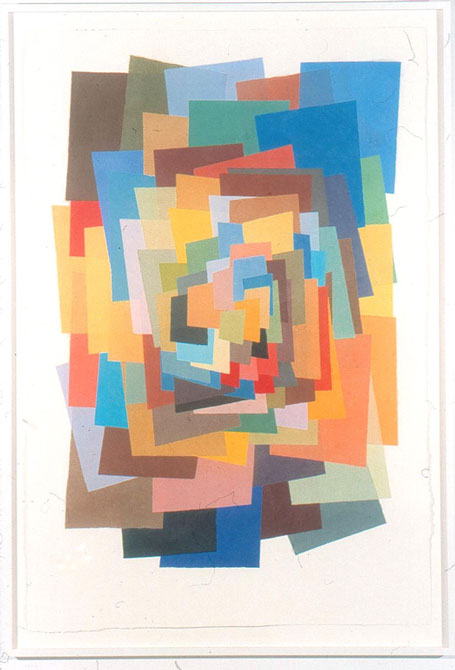M/E/A/N/I/N/G
Online
#2
Collaborations
Recently there has been a surge of critical interest in artist collaboratives. Taking a page from architecture, graphic design and web design firms, and film and theater productions groups like Forcefield from Providence, RI; Royal Art Lodge from Winnipeg, Manitoba; Space 1026 from Philadelphia, PA; Ugly Cute from Stockholm, Sweden; and Revolutions on Request from Helsinki, Finland have exploded the myth that art creation is a singular activity done in the isolation of a private studio. As well, most of these collaboratives have also expanded the range of fine art practice by including among their members: graphic designers, DJ's, industrial designers, filmmakers, skateboarders, and BMX bikers.
This is an important step forward for the art world as it represents a more inclusive approach to contemporary art—one that contains activities that are both practical (like architecture, design, and graphics), performative (like skateboarding), and purely aesthetic (like drawing and painting). The most interesting thing about artist collaboratives is that they raise serious social, philosophical, political, and economic issues that warrant further exploration. For instance, can young artists and designers continue to afford to work alone in light of the harsh economic reality that we currently live in or will they need to create cells that combine skill sets (metal, wood, ceramic and glass fabrication, physical and mechanical engineering knowledge, lighting design, etc.) that will enable them to create the complex installations and performances that are now filling galleries and museums around the world? Who should the work be attributed to—the group as a whole or the specific participants? What is the value of work done by a group—can it be tracked the same way as unique pieces created by an individual artist? What happens when the group disbands—who owns the inventory?
On a trip to Scandinavia in September 2002, I meet with several collaboratives that were started by young art and design school graduates. Ugly Cute, ROR, Our Design, and Group Ö are some of the best examples of how this new system might work. Depending on the proposal: a restaurant interior, a gallery space, a museum installation design, or an art exhibition, the collective reconfigures itself and puts forth the best matrix of people to work on the project. In the end the project is attributed to the collective regardless of the participants and the fees are split evenly. If the members of the collaborative work independently with industry or create unique pieces for exhibition the royalties or sales are split based on an internal determination of how much time each person has put into the project. For the time being this system seems to be working quite well and each collaborative has been able to execute large-scale projects with positive results.
So from the economic and social standpoints it seems as though collaboratives are viable, however, from a critic's standpoint it is difficult to assess collaborative work. Who worked on what? Is it important that each artist has an equal hand in the collaboration? Does each person's contribution need to be clearly defined for the work to be deemed a success? Does the fact that the work is collaborative (and maybe thus subversive) excuse it from all aesthetic considerations? Does the evaluation of collaborative work require a new vocabulary and a deeper understanding of process?
In my own practice as the director of non-profit fabrication studios I have seen first hand how the collaborative process influences the creation of art and design objects. At Dieu Donne Papermill, where I am currently the Co-Executive Director, our whole mission is based on the successful collaboration between artists and our studio staff. Much like the print field, where master printers facilitate the creation of more and more technically challenging 2D and 3D prints (at places such as Tyler Graphics, ULAE, Gemini GEL, Two Palms Press) at Dieu Donne we are reliant on our studio staff's ability to translate artist's ideas and visions into reality.
One recent Dieu Donne edition stands out in my mind as perfect example of how difficult it is to assess the results of the collaborative process. In 2002 Jim Hodges was awarded a residency at Dieu Donne and experimented with pouring translucent pulps into art core molds to create paper drawings. The creation of this body of work was completely reliant on the technical skills of Paul Wong, our Artistic Director, whose extensive knowledge of hand papermaking allowed Hodges to execute his ideas. In the end Like This 1-13 were made as studies for an edition that we published with Hodges called Returning.
 |
|
|
How would one assess if this collaborative work is successful or not? First I would try and determine whether or not the work represents Hodges' concerns as an artist (poetic use of materials, color, transparency, and installation flexibility). If I felt that I could see Hodges' gesture and artistic philosophy in the work I would then turn my attention to whether or not Dieu Donne achieved its goal of highlighting the process of hand papermaking as a viable medium in contemporary art practice. In order to do this I would want to know more about how the materials were used to make the pieces, who fabricated each component, and what if any limitations the process had on the overall composition and execution of the piece. In the end, the critic would need to need to put much more time and energy into understanding the background of the artist and processes used in the collaboration to make a final judgment compared to looking at something that Hodges did on his own.
Brett Littman is an art and design critic based in New York. He is the Co-Executive Director of Dieu Donne Papermill, a non-profit artist workspace dedicated to the creation, promotion, and preservation of new contemporary art using the hand papermaking process.
| Table Of Contents: |
| 01. |